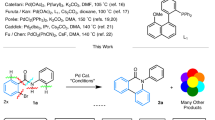Abstract
Michaelis and Menten found the direct mathematical analysis of their studied enzyme-catalyzed reaction unrealistic 100 years ago, and hence, they avoided this problem by correct adaptation and analysis of the experiment, i.e., differentiation of the progress-curve data into rates. However, the most elegant and ideal simplification of the evaluation of kinetics parameters from progress curves can be performed when the algebraic integration of the rate equation results in an explicit mathematical equation that describes the dynamics of the model system of the reaction. Recently, it was demonstrated that such an alternative approach can be considered for enzymes that obey the generalized Michaelis–Menten reaction dynamics, although its use is now still limited for cholinesterases, which show kinetics that deviate from saturation-like hyperbolic behavior at high concentrations of charged substrates. However, a mathematical approach is reviewed here that might provide an alternative to the decades-old problem of data analysis of cholinesterase-catalyzed reactions, through the more complex Webb integrated rate equation.



Similar content being viewed by others
References
Adomian G (1994) Solving frontier problems of physics: the decomposition method. Kluwer, Boston
Beal SL (1982) On the solution to the Michaelis–Menten equation. J Pharmacokinet Biopharm 10:109–119
Berberan-Santos MN (2010) A general treatment of Henri–Michaelis–Menten enzyme kinetics: exact series solution and approximate analytical solutions. MATCH Commun Math Comput Chem 63:283–318
Bevc S, Konc J, Stojan J, Hodošček M, Penca M, Praprotnik M, Janežič D (2011) ENZO: a web tool for derivation and evaluation of kinetic models of enzyme catalyzed reactions. PLoS One 6:e22265
Brown AJ (1902) Enzyme action. J Chem Soc 81:373–388
Buchner E (1897) Alcoholic fermentation without yeast cells. Berichte der Deutschen Chemischen Gesellschaft 30:117–124
Cornish-Bowden A (2013) The origins of enzyme kinetics. FEBS Lett 587:2725–2730
Duggleby RG (2001) Quantitative analysis of the time courses of enzyme-catalyzed reactions. Methods 24:168–174
Eisenthal R, Cornish-Bowden A (1974) The direct linear plot. A new graphical procedure for estimating enzyme kinetic parameters. Biochem J 139:715–720
Exnowitz F, Meyer B, Hackl T (2012) NMR for direct determination of K m and V max of enzyme reactions based on the Lambert W function-analysis of progress curves. Biochim Biophys Acta 1824:443–449
Goličnik M (2011) Exact and approximate solutions for the decades-old Michaelis–Menten equation: progress-curve analysis through integrated rate equations. Biochem Mol Biol Educ 39:117–125
Goličnik M (2012) On the Lambert W function and its utility in biochemical kinetics. Biochem Eng J 63:116–123
Goličnik M (2013a) ‘Die Kinetik der Invertinwirkung’ of L. Michaelis and M. L. Menten revisited after 100 years: closed-form solutions of genuine invertase reaction dynamics. MATCH Commun. Math Comput Chem 70:63–72
Goličnik M (2013b) The integrated Michaelis–Menten rate equation: déjà vu or vu jàdé? J Enzym Inhib Med Chem 28:879–883
Goličnik M (2013c) Solution of the Webb equation for kinetics of cholinesterase substrate-inhibition/activation using the Adomian decomposition method. MATCH Commun Math Comput Chem 70:745–758
Gonzalez-Parra G, Acedo L, Arenas A (2011) Accuracy of analytical numerical solutions of the Michaelis–Menten equation. Comput Appl Math 30:445–461
Henri V (1903) Lois generales de l'action des diastases. Hermann, Paris
Johnson KA (2013) A century of enzyme kinetic analysis, 1913 to 2013. FEBS Lett 587:2753–2766
Johnson KA, Goody RS (2011) The original Michaelis constant: translation of the 1913 Michaelis–Menten paper. Biochemistry 50:8264–8269
Kuzmic P (2009) Dynafit—a software package for enzymology. Methods Enzymol 467:247–280
Lineweaver H, Burk D (1934) The determination of enzyme dissociation constants. J Am Chem Soc 56:658–666
Masson P, Legrand P, Bartels CF, Froment MT, Schopfer LM, Lockridge O (1997) Role of aspartate 70 and tryptophan 82 in binding of succinyldithiocholine to human butyrylcholinesterase. Biochemistry 36:2266–2277
Michaelis L, Menten ML (1913) Die Kinetik der Invertinwirkung. Biochem Z 49:333–369
Radić Z, Pickering NA, Vellom DC, Camp S, Taylor P (1993) Three distinct domains in the cholinesterase molecule confer selectivity for acetyl- and butyrylcholinesterase inhibitors. Biochemistry 32:12074–12084
Reiner E, Simeon-Rudolf V (2000) Cholinesterase: substrate inhibition and substrate activation. Pflügers Arch – Eur J Physiol 440:R118–R120
Rosenberry TL (2010) Strategies to resolve the catalytic mechanism of acetylcholinesterase. J Mol Neurosci 40:32–39
Schnell S, Mendoza C (1997) Closed-form solution for time-dependent enzyme kinetics. J Theor Biol 187:207–212
Stojan J (2013) The significance of low substrate concentration measurements for mechanistic interpretation in cholinesterases. Chem Biol Interact 203:44–50
Webb JL (1963) Kinetics of some complex enzyme reaction types. Academic, New York
Zavrel M, Kochanowski K, Spiess AC (2010) Comparison of different approaches and computer programs for progress curve analysis of enzyme kinetics. Eng Life Sci 10:191–200
Acknowledgments
This study was supported by the Slovenian Research Agency (grant P1-170).
Author information
Authors and Affiliations
Corresponding author
Appendix
Appendix
Software-user-defined, built-in equations using fourth-order term approximations of solutions for product concentrations in GraphPad Prism 5.
- s:
-
=S0/Kss
- R:
-
=Ks/Kss
- t:
-
=Vm*x/Kss
- sR:
-
=(s + R)*(1 + s)
- f0:
-
=s*(1 + b*s)/sR
- f1:
-
=((−1 + b)*s^2 + R*(1 + b*s*(2 + s)))/sR^2
- f2:
-
=−(2*(−(−1 + b)*R^2 + (−1 + b)*s^3 + R*(1 + 3*s + 3*b*s^2 + b*s^3)))/sR^3
- f3:
-
=6*((1 − b)*R^3 + (b − 1)*s^4 − (b − 1)*R^2*(1 + 4*s) + R*(1 + 4*s + 6*s^2 + 4*b*s^3 + b*s^4))/sR^4
- s1:
-
=−t*f0
- s2:
-
=−(t/2)*s1*f1
- s3:
-
=−(t/3)*(f1*s2 + f2*s1^2/2)
- s4:
-
=−(t/4)*(f1*s3 + f2*s1*s2 + f3*s1^3/6)
- Y:
-
=−Kss*(s1 + s2 + s3 + s4)
Rights and permissions
About this article
Cite this article
Goličnik, M. Progress-Curve Analysis Through Integrated Rate Equations and Its Use to Study Cholinesterase Reaction Dynamics. J Mol Neurosci 53, 330–334 (2014). https://doi.org/10.1007/s12031-013-0129-y
Received:
Accepted:
Published:
Issue Date:
DOI: https://doi.org/10.1007/s12031-013-0129-y




